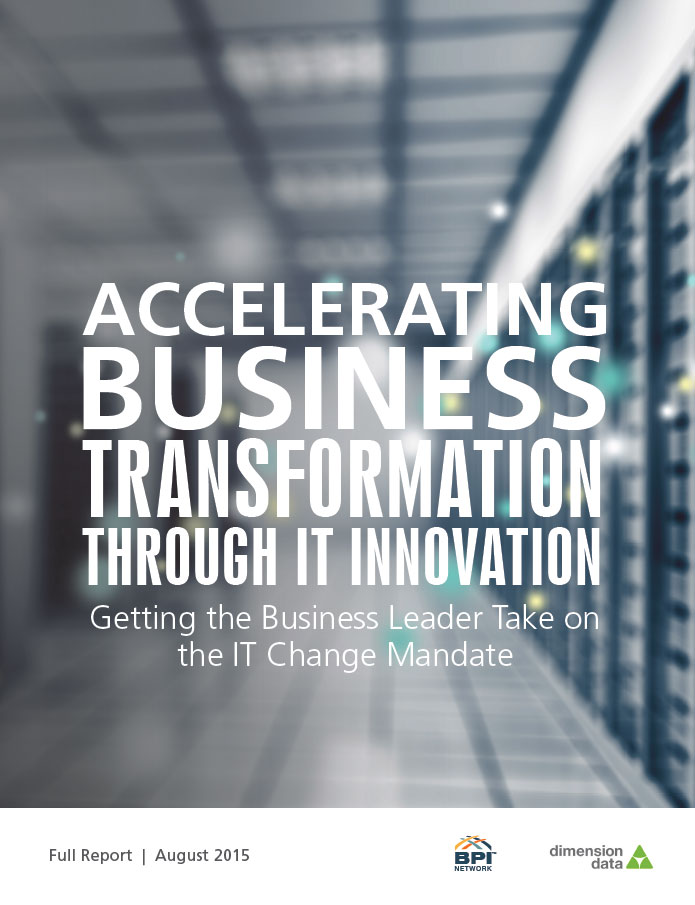Comprehensive Guide to Enterprise IT Service Automation
IT support automation uses software workflows, rule engines, AI/ML, and integrations to automate...

But the days of cost reduction as the primary focus of IT may have ended. As noted here a year ago, “improving the effectiveness of business processes” has replaced reducing costs as the top concern of IT leaders.
 Now, research from the Business Performance Innovation (BPI) Network reinforces and builds on this trend. Across enterprises, business leaders are looking to IT and new technologies to help “increase agility, improve customer experience, and make their companies more competitive.”
Now, research from the Business Performance Innovation (BPI) Network reinforces and builds on this trend. Across enterprises, business leaders are looking to IT and new technologies to help “increase agility, improve customer experience, and make their companies more competitive.”
As the mission of IT is transformed from driving out costs to driving business model innovation, IT’s profile is raised as well. Per the BPI research, almost two-thirds (65%) of enterprises “say technology has become ‘far more important’ to their organizations in the past five years. Another 28% see it as ‘somewhat’ more important.”
The BPI survey findings cover a range of topics, from how much time is spent on “understanding strategic implications of new technologies,” to applying DevOps practices to “improve responsiveness to ever-changing business requirements,” to cloud computing, IoT, and social media data mining—all in the context of innovation.
Enterprise request management—combining an intuitive centralized request portal with back-end fulfillment process automation to improve employee it provisioning while reducing costs (a.k.a. building an enterprise service catalog)—can play a vital role in enterprise innovation by supporting three key areas identified by the BPI study:
“Three areas that would benefit most from transformative technologies: Operational efficiency and effectiveness (52%); Customer experience, monetization and retention (33%); and Organizational alignment, culture and collaboration (28%).”
Utilizing an ERM approach to employee provisioning and enterprise shared services management improves operational efficiency and reduces costs in several ways:
As product and service differentiation become more difficult due to proliferation of “me too” offerings, enterprises are turning to customer experience optimization as a source of sustainable competitive advantage.
But creating a great customer experience starts with creating a great employee experience. Happy employees make for happy customers, and excellent customer service is an essential component of optimizing the business experience for customers.
ERM simplifies and accelerates employee provisioning, enabling them to be more productive and spend more time focused on exceeding customer expectations.
Additional research from the Society for Information Management shows that “alignment of IT with the business” is a top concern for CIOs in 2016. IT groups continue to be challenged to get and stay aligned with the rapid and often dramatic changes in business needs.
While there are many elements to IT-business alignment, ERM helps in two key ways. First, it provides a platform to rapidly deliver new services (e.g., BYOD device registration, cloud server provisioning) and apps to users through the portal.
Second, it empowers business process owners outside of IT to design, test, optimize and deploy their own service offerings through the portal using graphical workflow mapping tools, with minimal technical assistance.
That is, ERM not only gives employees one place to request anything needed to do their jobs, but also gives process owners across the business one tool—which integrates with and leverages existing enterprise and departmental management applications—to present and automate the delivery of their services.
Organizations can also standardize on common collaboration tools for change management and problem resolution across business functions.
Summarizing and commenting on the findings of the BPI Network research for DevOps.com, George V. Hulme writes that too often, IT groups “build applications that attempt to accomplish too much, and end up being overly complicated and largely unused as a result… they end up developing complicated apps that people don’t actually use instead of developing apps that their users really need.”
Implementing ERM avoids that fate as it is designed to be built out in an incremental manner, using an agile development approach. An ERM portal can be initially launched with just a few common services in the catalog, then gradually expanded over time. New services can be added in a matter of weeks, enabling IT to quickly respond to changing business needs.
Most of the respondents in the BPI study believed their IT teams had room for improvement in meeting business operational and innovation needs. As Hulme quotes the study: “How well is the IT organization executing mandate to transform and become a more strategic, responsive and a valued business partner? Only 15% said ‘very well’ while …most were in the middle” (between “very well” and “poor”).
By helping IT groups in the “three areas that would benefit most from transformative technologies”–operational efficiency, customer experience, and organizational alignment–implementing an ERM strategy can play one vital part in getting their efforts seen as strategic, responsive, and innovative.

IT support automation uses software workflows, rule engines, AI/ML, and integrations to automate...

Business process reimagined is the strategic renewal of how work gets done by combining modern digital...

You've probably noticed (what we're calling) the "logo-swap test" lately: all the AI ads in market sound...